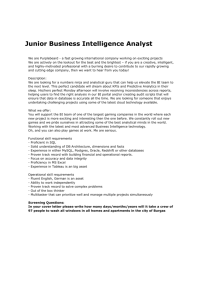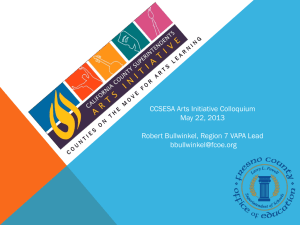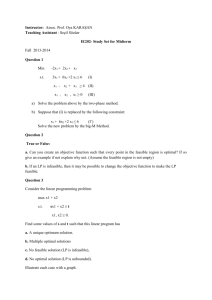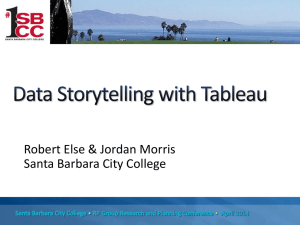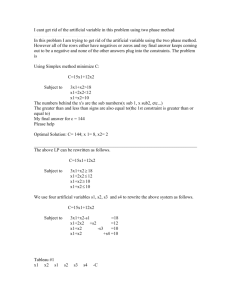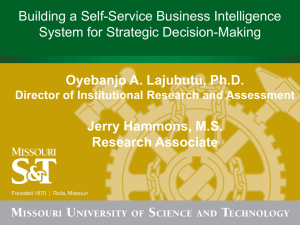Teatro di Piazza D'Occasione
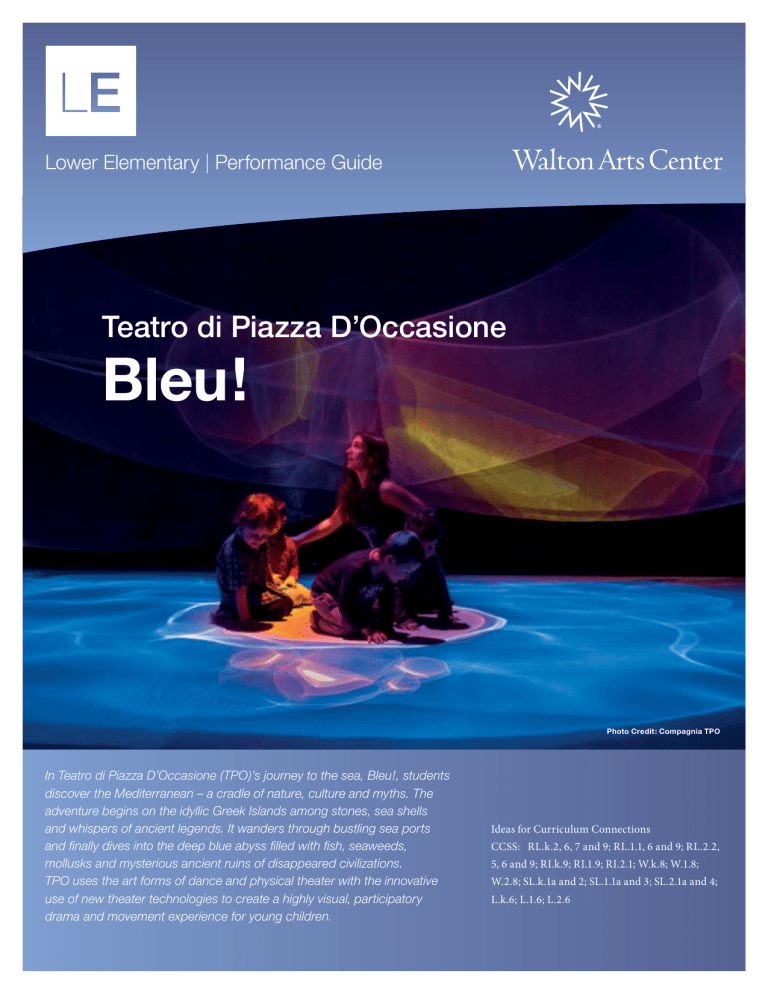
L E
Lower Elementary
|
Performance Guide
Teatro di Piazza D’Occasione
Bleu!
Photo Credit: Compagnia TPO
In Teatro di Piazza D’Occasione (TPO)’s journey to the sea, Bleu!, students discover the Mediterranean – a cradle of nature, culture and myths. The adventure begins on the idyllic Greek Islands among stones, sea shells and whispers of ancient legends. It wanders through bustling sea ports and finally dives into the deep blue abyss filled with fish, seaweeds, mollusks and mysterious ancient ruins of disappeared civilizations.
TPO uses the art forms of dance and physical theater with the innovative use of new theater technologies to create a highly visual, participatory drama and movement experience for young children.
Ideas for Curriculum Connections
CCSS: RL.k.2, 6, 7 and 9; RL.1.1, 6 and 9; RL.2.2,
5, 6 and 9; RI.k.9; RI.1.9; RI.2.1; W.k.8; W.1.8;
W.2.8; SL.k.1a and 2; SL.1.1a and 3; SL.2.1a and 4;
L.k.6; L.1.6; L.2.6
Photo Credit: Compagnia TPO
The Performance
Bleu!
is an interactive production about the sea. It is playfully performed by two dancers and groups of children who are invited onto the stage. The children and performers interact within a technologically sensitive environment where they use movements and gestures to “paint” the floor and stage space as the story develops.
The performance opens with a tableau (living picture) in which a
Mediterranean sailor hauls in his fishing line. He meets a charming character who portrays the sky, the wind, the waves and the sea at different times. Their story is about the interaction of mankind with the forces of nature as inspired by Mediterranean mythologies and legends. Children in the audience are asked to be young sailors and take an active part in the sequence of the story.
The audience sits on three sides of the performance space, a white dance mat on the floor and a spiral-shaped fabric draped above the stage. During the performance the spiral drapes are lowered until they envelop the performing space. Both the floor and the fabric become surfaces for projected images that seem to float with light, space, sound and movement.
The Artists and Artform
Teatro di Piazza D’Occasione (TPO) is an Italian company that has created visual theater for children for the past 30 years. The company explores new ways to use technology with dance, music, visual art and poetry.
Their design for Bleu!
creates a unique scenic space. The interactivity of the performance is accomplished with sensory optics. Infrared video cameras and sensors detect movement and the computer then projects specific images on the dance floor and walls.
Some of the objects
(props) used on stage, like rope, shells, sticks or sponges, allow for interactivity with light or sound. Other obects, like a bright pearl and a fish, are part of the theatrical effects.
The Set
The dance floor at the center of the stage, is a sensitive mat that holds a series of pressure sensors, like the keyboard of a piano. Pressure triggers a series of images and sounds. Some students from the audience are invited to walk, run and jump on the mat as they explore the space. From above, an infra-red video camera optically senses the slightest movement, a gesture of a hand or the extension of a leg. This technology allows a dyamic and complex kinesthetic interaction between the dancer’s body and light and sound on stage.
TPO Bleu! / Performance Guide
Learning Activities
Notice Movement
Prepare to see movement by thinking about
B. E. S. T.: Body, Energy, Space and Time.
These elements of movement are useful to help plan what to look for and guide reflection and discussion after a performance.
Energy – The way the body moves with force, weight, strength or flow.
Space – Direction, pathway and destination in space. Levels, like low, medium and high are important for still bodies in space.
Focus of the performer (where the artist looks in space) is important.
Body – Parts of the body, like head, arms, hands, hips, legs and feet are used to create shapes and perform actions like stretching, bending, walking or leaping.
Time – Speed and duration of movement, and also rhythm, accents and use of movement patterns.
Tableau
Tableau (tab-BLO) is short for the French, tableau vivant (tab-BLO vi-VAHNT) which means “living picture.” A tableau is a representation of a dramatic scene by a person or group, posing silently without moving.
Combination tableaus can show a beginning tableau (frozen picture) followed by a short movement followed by a final tableau.
Create frozen pictures of: a pearl, a sailor, wind, waves, bottom of the sea and marvelous creatures.
Photo Credit: Compagnia TPO
Four Movements Tableau
Bleu! tells a story about the ocean using a four movement structure
> The Sky at Night
>
>
The Sea’s Surface
The Storm
> Underwater
Divide the class into four groups and assign each group one of the four movements.
Each group should create two tableaux, a beginning pose and an ending pose, that expresses something about their movement. In addition the group needs to devise a moving transition between their tableaus, performed to five counts. For example, the second movement, The Sea’s Surface might be expressed as follows. Students begin with a tableau of sailors in a boat. The moving transition is of five count duration and shows the ripples on the sea’s surface. The students use their ripple motion to move into a final tableau that shows the sailors’ reaction to the moving sea.
Tableau in a Classroom
The disciplined, active and creative drama technique of tableau can be used successfully and imaginatively in the classroom. It is a lowrisk strategy that requires a team of students to use their bodies to represent an event or situation as if frozen in time. Tableau supports students’ application, expansion and expression of their knowledge by asking them to take on the role of people or objects to create a living picture of characters in a story or people and objects in a historical event.
The benefits of tableau in the classroom are many. Tableau allows teachers to engage students with multiple learning styles. It can serve as a quick assessment tool of student learning when students “show what they know” as a frozen picture. Tableau can support student achievement in literacy when used to prepare and motivate students to comprehend text and analyze literary elements such as character, plot, theme, conflict and resolution.
Tableau works best in and supports a cooperative learning environment. While working in tableau, students practice cooperation and compromise as they share ideas to create and express one powerful idea.
Learn more at: www.waltonartscenter.org/ media/uploads/education_images/Smart_
Residency_Tableau_Study_Guide_14.pdf schools@waltonartscenter.org / www.waltonartscenter.org
Volume 11 Number 21
Colgate Classroom Series performances help students meet Common Core
Standards.
Photo credit: Compagnia TPO
Reflect and Assess After the Performance
Using partners, have students consider each question, record their answers and then share their responses with the rest of the class.
>What did you think about Bleu!
? What part(s) of the production do you
remember? What questions do you have?
>Describe the characters in Bleu!
Who were they? What were they doing? Why?
>What did you already know about the ocean and starfish before the
performance? What do you know now?
>If you were in the performance of Bleu!
, how would you play each of the
characters? Why would you perform them that way?
>How did the set help tell the story? What sounds did you hear?
>How did the performance make you feel?
>What moment in the play do you remember most?
>Write a description of that moment for someone who was unable to experience
the performance.
>What questions do you have for the artists?
Learn More Online
Learn more about TPO and see a video of Bleu! at http://vimeo.com/78659636
Learn more about Tableau at www.waltonartscenter.org
Learn more about arts in education at http://artsedge.kennedy-center.org/artsintegration
Walton Arts Center 2013-2014 Learning programming is generously supported by these funders, sponsors and benefactors:
Colgate-Palmolive
General Mills
JB Hunt Transport
Kimberly-Clark
Murphy Consulting, Inc
Nestle
Prairie Grove Telephone Co.
Shipley Motor Company
Tyson Foods
Unilever
Walmart Foundation
Education Grantors:
Arkansas Arts Council
The John F. Kennedy Center
for the Performing Arts
Walmart Foundation
Education Partners:
Crystal Bridges Museum of
American Art
Northwest Arkansas Education
Service Cooperative
Learn more at: www.waltonartscenter.org
Education Benefactors:
Ted and Leslie Belden
J.B. and Rachel Blankenship
Chip and Susan Chambers
Nick and Carolyn Cole
Jon and Joanie Dyer
Murray and Judy Harris
Malcolm and Ellen Hayward
Rich and Kristin Kley
Greg and Hannah Lee
Neal and Gina Pendergraft
Imelda and J.T. Rose
Jeff and Eileen Schomburger
Mechelle and Jack Sinclair
Kirk Thompson
Walton Arts Center
Learning & Engagement
Laura Goodwin, Vice President
Dr. Patricia Relph, Arts Learning Specialist
Katie Williams, Manager
Shannon Rolle, Schools Concierge
Jerry and Brenda Walton
Jim and Lynne Walton
Dr. & Mrs. John B. Weiss
Season support provided by
Walmart / SAM’S CLUB
Arkansas Arts Council is an agency of the Department of
Arkansas Heritage and the
National Endowment for the
Arts
TPO Bleu! / Performance Guide
